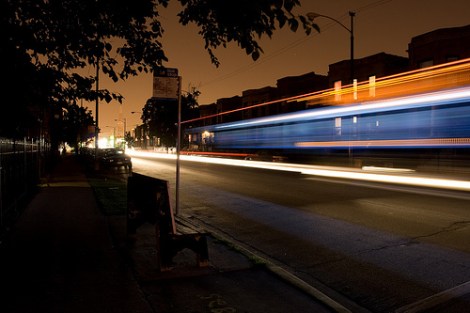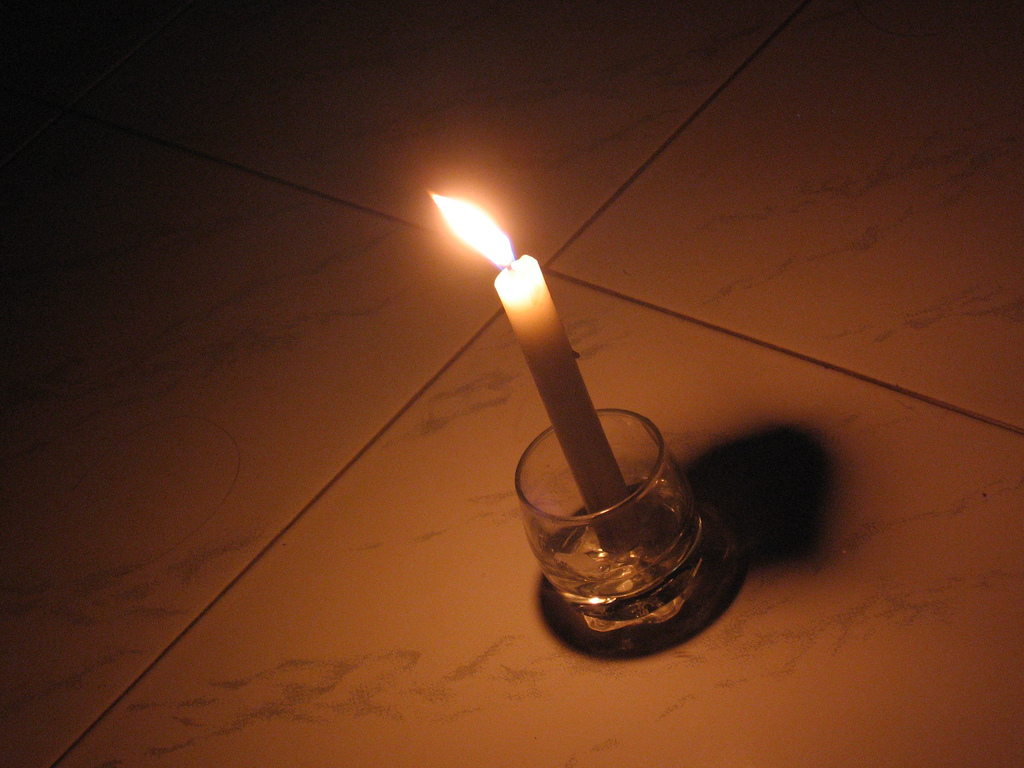There’s a natural question that follows from the massive blackouts in India this week: Could it happen here?
The far-too-short answer is yes. It could happen here. But it is very, very unlikely — at least on that scale.

A blackout in Chicago. (Photo by infiniteexpanse.)
Maggie Koerth-Baker, author of Before the Lights Go Out, has a wonderful post at Boing Boing answering this specific question. I strongly recommend you go read it in full.
Her piece is predicated on an assessment of the massive 2003 blackout that affected much of the Northeast. How’d that happen? What could have prevented it? Are those precautions now in place? The 2003 blackout, Koerth-Baker notes, was caused by a cascade of small problems, starting, in part, with the failure of a power company to sufficiently trim trees near its lines. (An untrimmed tree, she notes, can yield $1 million in fines.) Because of this maintenance failure, six transmission lines went down in a row.
In 2003, the people trying to stop the blackout didn’t have a clear view of it. Partly, that had to do with the faulty software program that wasn’t turned back on and the alarm system failure that apparently went unnoticed. But it was also just how the grid worked. The systems in place to tell grid controllers what the electrons were doing moved a lot more slowly than the electrons themselves.
In 2003, it took about 30 seconds for data about what was happening on the grid to be gathered, compiled, analyzed, and displayed in a way that grid controllers could use. That sounds pretty fast, until you consider the fact that electrons move at close to the speed of light. …
[A]bout an hour and 40 minutes before the blackout, the grid was showing signs of stress that controllers didn’t see at the time, said Carl Imhoff, manager of the Energy and Environment Sector at [Pacific Northwest National Laboratory]. It wasn’t the controllers’ fault. They simply didn’t have the technology to see the big picture.
One solution is to introduce technology to improve that monitoring — a process that is underway currently.
Koerth-Baker notes a key problem (as does Ashley Halsey at the Washington Post): An upgrade to our electrical infrastructure is sorely needed. Here’s Halsey, writing about the outages caused by the derecho:
“The aging of equipment explains some of the equipment failures that lead to intermittent failures in power quality and availability,” the American Society of Civil Engineers (ASCE) said in a report this year. “The capacity of equipment explains why there are some bottlenecks in the grid that can also lead to brownouts and occasional blackouts.”
The ASCE calculated that an additional investment of $107 billion was needed by 2020 to keep the electrical infrastructure whole.
“Electricity was primarily a luxury when the majority of our grid was built 50, 60 years ago,” Lynch said. “Most people didn’t require computers to do their jobs every day. They didn’t need the Internet access. IPhones didn’t need to be charged, and communication was all hard-wired, so you could still make a phone call when the electricity was out.”
Koerth-Baker notes that the “average substation transformer is 42 years old — two years older than the designed lifespan of a substation transformer.”
[Researcher] Massoud Amin has estimated the cost of grid improvements. To make the grid stronger — adding more high-voltage lines and upgrading the existing ones — he says we need to spend about $8 billion a year for 10 years.
But such an upgrade would save $49 billion a year from blackouts. The American electrical system averages between 90 and 214 minutes of blackout time a year per customer, compared to four minutes in Japan.
The important take-away, from Koerth-Baker: “The North American electric grid is not one bad day away from the kind of catastrophic failures we saw in India this week.” Our grid is far more robust, despite its flaws. To fix the remaining flaws, as in India, will require disparate and competing political interests to come together. Not ideal. But perhaps India provides a sufficient lesson in what could someday happen if we take no action at all.




